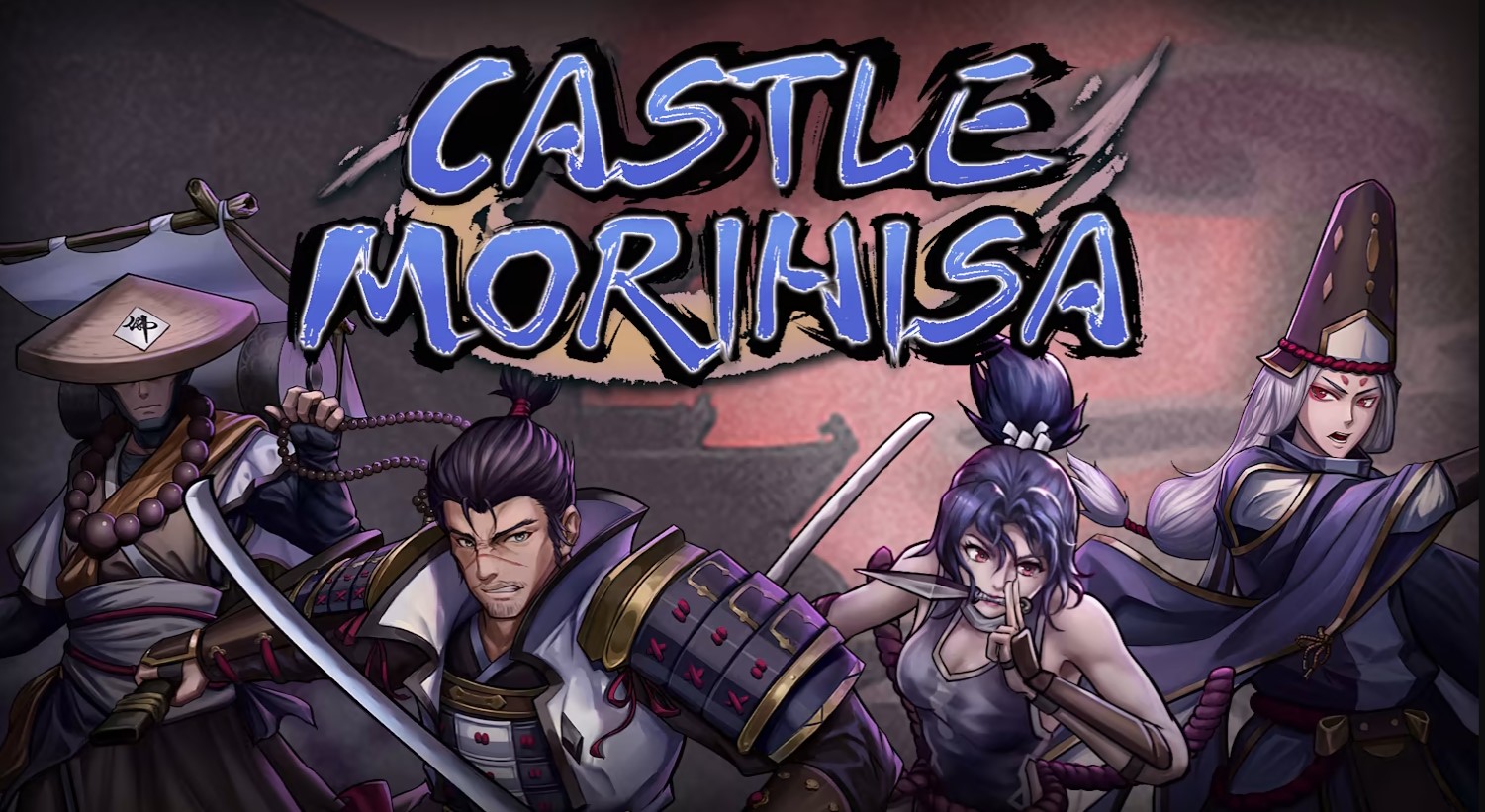Put on your Kabuki mask, grasp a katana in your teeth, and get ready to Naruto run, it’s Castle Morihisa time!
<David knocks himself out ninja-running straight into a wall>
Ouch. Ok. So. In Castle Morihisa, you take control of one of four heroes; a monk, an onmyoji (a seer/priest), a samurai, or a ninja. You will travel through three lands in Sengoku-era Japan, choosing whether to fight mobs of oni and the risen dead, cursed animals, and deadly spirits, go after their elites, rest at campfires or investigate strange occurrences. As you do, you will become stronger and better equipped to enact your ultimate goal; besiege Castle Morihisa itself, and attempt to break the curse that has befallen these lands.
All that is easier said than done because Morihisa is hard. The game is a deck builder; combat is determined by the cards you draw from your deck and play what you can base on your limited actions per turn. Initially, you start with just basic attacks and blocks, but as you beat enemies you will add new cards; better defends and attacks, combat-lasting buffs, tricky combo skills, summonable ghosts, expendable powerful items, and more. As you add, upgrade (and buy, from shops) more cards, your deck transforms, getting bigger and bigger; you may have better cards, but now its less likely to draw them when needed, so you need to dispose of less useful, often older cards… and that either costs money, or lucky encounters.
Building a powerful, reliable deck becomes this balancing act; do you accept the free new powerful card just because it’s crazy good, or turn it down as in truth it’ll just complicate your combos? This is made even more complex, and rewarding, by the Relics and Attributes. Relics are items you pick up that subtly change the mechanics of the game; some mean any cards you obtain of a certain type are instantly upgraded to their best form, others let you restock the shop for free or paid with money, and others give you new options like transforming multiple cards instantly or allowing you to destroy cards at campfires. All welcome options that simply give you more choices without changing too much.
Attributes meanwhile give your character incredible new abilities in combat. They come in multiple tiers on a randomly generated board, at first with only four abilities costing one point each. Buying one reveals the three costs… then the five costs… and finally the big seven cost abilities, each requiring two, level fives as prerequisites. But those are the only location-based prerequisites; once something is revealed, and you can afford it, you can buy it. All of these abilities are in some way, game-changers that can make your deck into a monster.

Consider combining abilities that reduce damage below five to one, stacking armour not disappearing between turns, and bonus damage when you play three defence cards in a turn? Or perhaps making the weakness debuff twice as effective, giving all your enemies weakness at the beginning of combat, and giving you a buff when you attack a weakened enemy? Or perhaps even a simple heal, extra damage, and extra defence when fighting bosses?
These are all entirely doable… though you might want to pray to RN-Jesus due to the semi-random nature of the ability trees. well, less a tree. Shrub. Bansai Shrub. Ability BansaiShrub.
All of this is cool and all, and makes for a pretty good game… but there’s an elephant in the room isn’t there? There’s a good chance you read this and were like “Hang On, Isn’t This Slay The Spire?”. And If you weren’t… well… it is. Castle Morihisa is essentially a reskinned, kinda simpler Slay the Spire… and in that comparison, it’s just not as good. Yup, we got another Dandy Ace to Hades situation here. Things are different enough to be a separate game, sure, but the spectre is always going to loom.
Sadly, I feel it just doesn’t quite match up to Slay. In Castle Morihisa you can access the shop at any time, instead of potions you have three three-use fallen heroes’ ghosts, and the attribute system is boss… but Slay has better, more animated sprites, a clear unlock system that rewards you for plays rather than successful runs, and the world is a unique, fresh take. It’s just that level of polished above Morihisa to, in my eye, outclass it, and that’s sad.

That all said, Morihisa clobbers Spire in single, big regard; the theming is incredible. The Sengoku period medieval Japan atmosphere is carried out to absolute perfection. The enemy roster consists of folklore monsters and yokai, archetypes like the cursed dead, monstrous animals, ghostly warriors, and demonic samurai.
The sound effects and music seem straight from Kurosawa dramas, as do the scenarios you encounter; ravaged villages, the pleading near-dead, and crossing dangerous rivers. Even the gameplay and attributes reflect this perfectly; the monk being able to reach enlightenment as he attacks with tantra-themed moves, reaching an avatar-like state where every attack becomes free, to the Onmyoji’s use of summoning and banishing Yokai spirits to trigger rituals and traps. Heck, even straight-up letting you play as a Samurai and Ninja, right down to the Fallen Hero abilities being actual historic figures lending their names to appropriate skills – Nobunaga, infamous shogun & tyrant, for instance, gives one of the straight-up biggest, bloodthirstiest attacks in the game.
Morihisa’s ancient Japan theming is flawless, and a real thrill.

If you liked Slay The Spire and want more, or you just go crazy for RPGs with ninja and ghosts, Castle Morihisa is a definite must. It ain’t perfect, but its gloriously painted Samurai helmet is. Enjoy.
<David Naruto- runs samurai helmet first into another wall>


















